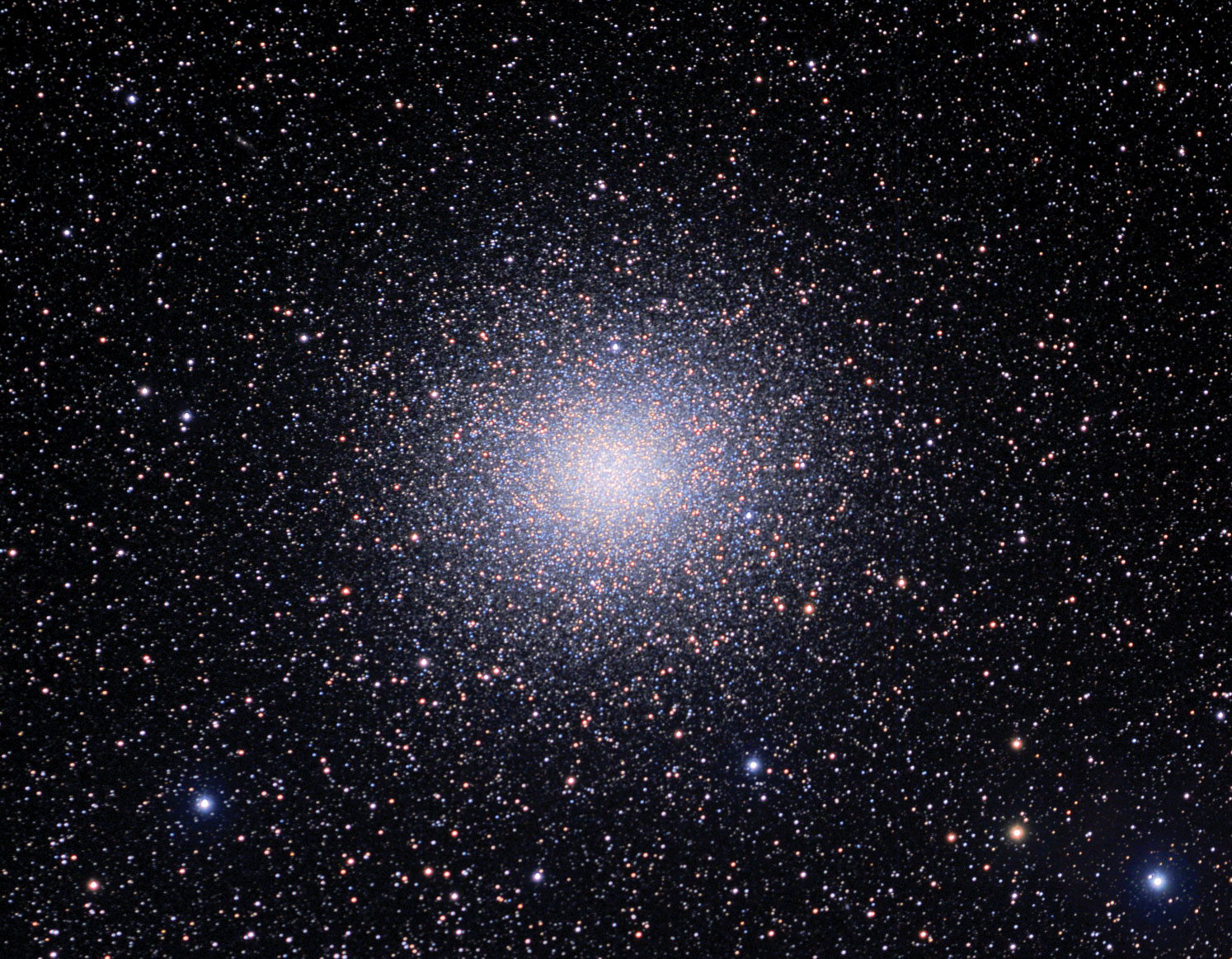
NGC 5139

Fred Calvert, Cold Spring Observatory
Appearing
almost as large as a full moon to the naked eye, Omega Centauri is the biggest
and brightest of the 150 known
globular clusters in
the Milky Way galaxy. About 10 million stars orbit the center of the cluster
which stretches 150 light years across at a distance from Earth of about 15,000
light years. It is estimated that the stars in the core of the cluster are only
0.1 light years apart. In recent years Hubble Telescope Data indicates evidence
of an intermediate-mass black hole at the center of the cluster, suggesting that
Omega Centauri is actually the core of a failed dwarf galaxy which was disrupted
during formation and absorbed by the Milky Way galaxy. Omega Centauri has been
cataloged as many different types of object as far back as 150 A.D., but was
first recognized as a globular cluster by Scottish astronomer James Dunlop in
1826.